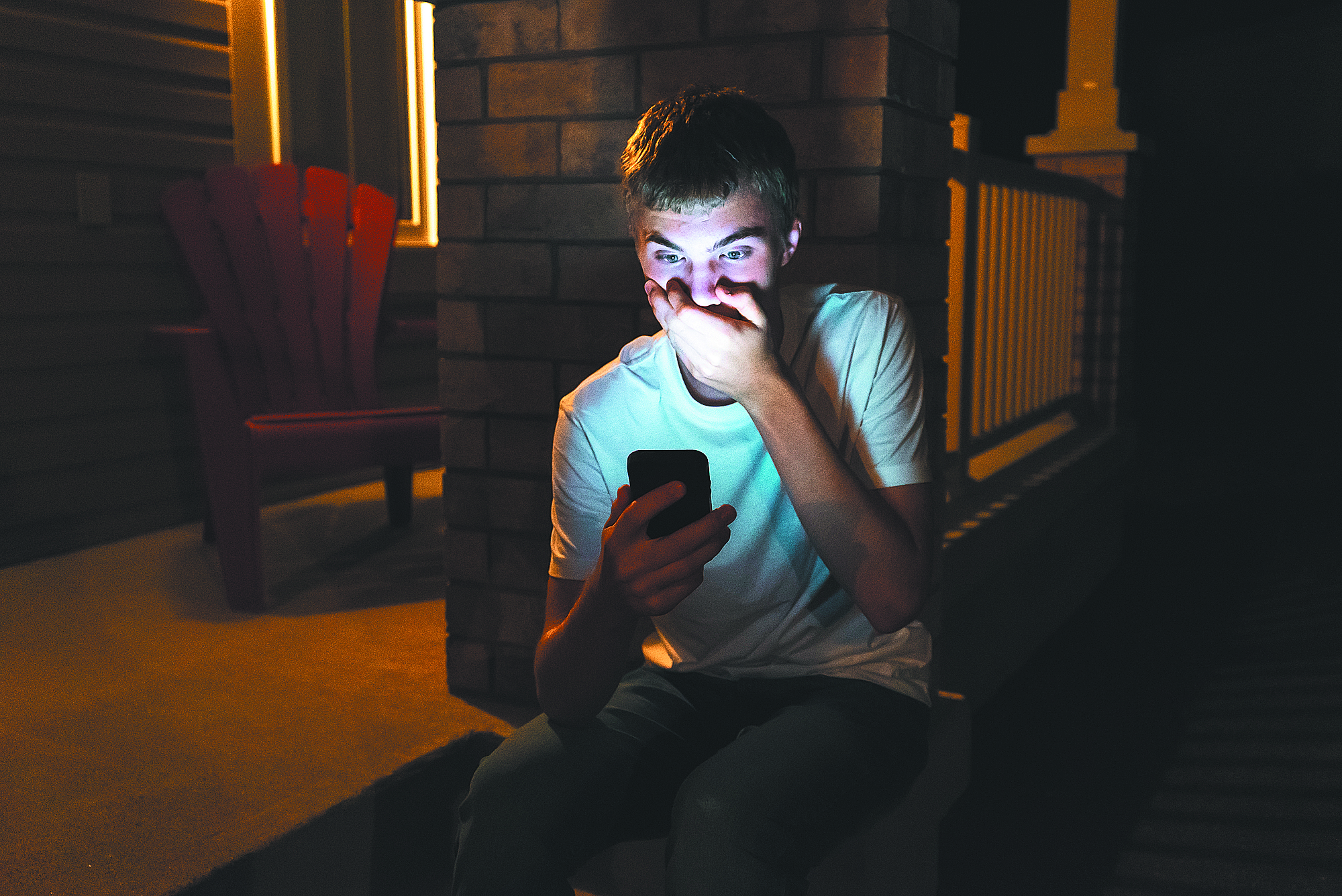Around a third of young people engage in sexting. In a 2022 meta-analysis in the Journal of Adolescent Health of 28 studies from around the world, 19% of people between the ages of 11 and 21 had sent a sexual message or image, 35% had received one and 15% had forwarded one without consent. Given that underage sexting is not only illegal in many states but often threatening or abusive, parents need to help their kids navigate this terrain.
The ubiquity of smartphones and the parade of cautionary tales in Senate hearings with tech CEOs have made parents increasingly adept at discussing screen time and social media. But chats about taking and sharing nude images—what adults often call “sexting” and teens call “sending nudes”—often get sidelined. In a survey of 402 parents published in the Journal of Online Trust and Safety in 2022, around six in 10 parents of middle schoolers and seven in 10 parents of high-schoolers said they had addressed sexting with their children. Yet many of these talks may have been too subtle. In a survey of 226 high-school students published in Sexuality & Culture in 2021, 18% said their parent had discussed sexting.
This reticence is not surprising, given the discomfort many parents feel when talking to their kids about sex. My college students often tell me that their parents’ version of a sex talk was to simply say “don’t have sex” or “if you’re going to have sex, use a condom.” Such caginess typically ensures kids get their guidance about sex online or from their peers.
Many parents also tend to see their children as, well, children, who are too young or too naive to even think about taking or sharing nudes. In interviewing parents for my research into teens and sex, I recall a mother who said her 12-year-old son had been spending hours in his bedroom with his new smartphone. When I asked if she or her husband had spoken with him about pornography or sexting, she looked down and quickly said “no,” adding, “he’s just really into watching baseball videos and texting with friends.”
Time and again, I heard parents say some version of “they’re a good kid,” meaning they felt their child presumably knows better than to send or ask for nude photos. But teens, like adults, are complicated human beings, and it is certainly possible for them to like baseball or cats and still be curious about exploring their sexuality.
Many parents learn this the hard way. Quite a few told me stories about their tween or teen being asked for nudes, either by peers or adults through social media, sometimes as part of a scam that targets teens. One parent shared that her daughter was 10 when a good friend’s older brother first asked her to send a nude photo of herself. Another described how her fifth grade son had been pressured for nudes by adult men on gaming sites. Several shared that their teen had been offered hundreds of dollars for nude pictures, usually from adults who had messaged them through social media.
It bears noting that these are incidents that parents knew about. Many tweens and teens are too embarrassed or ashamed to open up about their experiences with sexting, particularly if their parents are too embarrassed or ashamed to discuss it first.
In my conversations with young people, it is clear that few are aware that taking, possessing or sharing nudes of minors is often illegal, even when the exchange is consensual. There is little data on just how many sexting cases lead to legal action, but I’ve spoken with a few attorneys whose juvenile clients faced criminal charges of child pornography after willingly exchanging nude images. Many schools ban the practice, and school officials are often required to report sexting incidents to the police.
There is some debate over whether these laws are appropriate. In a 2019 article in the journal Pediatrics, pediatricians and other adolescent experts argued that consensual, non-coerced teen sexting should be considered a “health and development issue, not a legal one.” Given growing evidence that sexting has become a common part of adolescent sexual development, 26 states treat consensual juvenile sexting as distinct from child pornography, often a misdemeanor punished with education and counseling. The remaining states classify underage sexting as a pornography problem, which is more serious. Coercive or nonconsensual sexting is far more problematic, and is associated with feelings of anxiety and depression, particularly among tweens.
Regardless of the law, it is important that adolescents understand that once they send a nude photo, they have little control over where it ends up. Young people often fail to appreciate that photos they give willingly during a relationship can be weaponized during a breakup. It isn’t uncommon for these images to be used to shame, bully or harass teens, especially girls. Some of my college students have expressed anxiety that their nude selfies may now be on display somewhere online, much like the photos of naked women discovered on a Pennsylvania State University fraternity Facebook page in 2015, which led to student expulsions and the suspension of the fraternity. This is why education programs about sexting shouldn’t be doled out as punishment, but as prevention, before the harm is done.
Parents of young children have time to build toward later conversations. This can be as simple as telling kids when they are taking photos, “Remember, we don’t take pictures of people’s naked bodies.” In a recent episode of the popular children’s show “Bluey,” for example, Bluey and Bingo’s mom tells them “don’t take pictures of people’s bottoms” when they photograph her practicing yoga.
For parents of tweens and teens, discussions must be more direct. In my conversations with parents, far too many believed they had warned their kids about sexting without ever actually mentioning sexting. One dad explained, “We’ve told our kids: don’t text anything to your friends that you wouldn’t want your grandmother to see.”
This is not enough. It is important to tell children that sharing nude images of themselves or of a peer can be both harmful and illegal. When discussing healthy relationships, make it clear that pressuring someone to behave sexually or send nudes is a red flag. In talks about online safety, parents should urge children to speak up if an adult or stranger asks for or sends sexual images of any kind.
It is best to relay this information with compassion, not shame. When parents express their concerns with love and support, children are more likely to open up when something uncomfortable happens, either to themselves or their peers. When young people worry they have made an irredeemable mistake in sending nudes, they are more vulnerable to sextortion. This is when people use a sexual message or image as blackmail and demand some kind of payment to prevent its distribution. In a national survey of 5,568 U.S. middle and high-school students published in Sexual Abuse in 2020, about 5% reported having been the victim of sextortion, while about 3% admitted to threatening others.
Parents and children might collaborate on rules for smartphones and other devices. Some will decide to ban phones from bedrooms, especially overnight, which helps with sleep; others will agree to let parents use apps that monitor phone usage or do occasional phone “spot checks.” Adolescent sexting may feel like a daunting topic, but kids find it easier to follow rules when they have a say in them.
Debby Herbenick, Ph.D., is a Provost Professor and Director of the Center for Sexual Health Promotion at the Indiana University School of Public Health-Bloomington and the author of “Yes Your Kid: What Parents Need to Know About Today’s Teens and Sex.”







